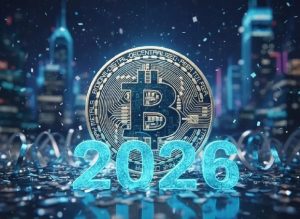Federal Reserve Expected to Cut Interest Rates Amid Growing Labor Market Concerns
In what could mark a significant shift in monetary policy, the Federal Reserve appears poised to reduce interest rates at its upcoming meeting next week. This anticipated move comes as officials express mounting concerns about the stability of the U.S. labor market, which has shown signs of cooling after a post-pandemic boom. While the economy continues to demonstrate resilience in many sectors, recent employment data has raised red flags among policymakers who are eager to prevent any substantial deterioration in job growth or increases in unemployment.
The potential rate cut represents a delicate balancing act for the central bank, which spent much of the past two years aggressively raising rates to combat inflation that reached four-decade highs. Now, with inflation gradually moderating toward the Fed’s 2% target, attention has shifted to preserving economic growth and protecting labor market gains. Analysts widely expect a quarter-point reduction, though some market participants are advocating for a more aggressive half-point cut to get ahead of any potential economic slowdown. This pivot comes amid growing global economic uncertainties, including ongoing geopolitical tensions and trade disruptions that could potentially impact American workers.
Labor market indicators have sent mixed but increasingly concerning signals in recent months. While the unemployment rate remains historically low, job creation has slowed, and initial jobless claims have gradually increased. Several industries that previously experienced robust hiring, particularly in technology and manufacturing, have announced hiring freezes or layoffs. Additionally, wage growth has moderated, suggesting employers are becoming more cautious about expansion. Fed officials have emphasized that maintaining maximum employment is a core aspect of their dual mandate, alongside price stability, and they appear increasingly willing to take preemptive action rather than risk allowing labor market weakness to spread throughout the economy.
The anticipated rate cut also reflects the Fed’s evolving understanding of inflation dynamics in the post-pandemic economy. After initially describing price pressures as “transitory,” the central bank was forced to acknowledge more persistent inflation and responded with one of the most aggressive tightening cycles in its history. Now, with supply chains largely normalized and demand patterns stabilizing, officials appear more confident that inflation will continue its downward trajectory even with more accommodative monetary policy. This evolving perspective allows the Fed to shift focus toward supporting economic growth and employment without abandoning its inflation-fighting credibility. Businesses and consumers may soon feel relief from higher borrowing costs that have impacted everything from mortgage rates to credit card interest and business loans.
Financial markets have already begun pricing in the expected policy shift, with stocks rallying and bond yields declining in anticipation of lower interest rates. Housing market participants are particularly attentive, as mortgage rates have already begun to decline from their recent peaks, potentially reinvigorating a sector that had cooled significantly under higher borrowing costs. Consumer sentiment could also improve as Americans begin to see relief from elevated interest payments on variable-rate debt. However, economists caution that the full impact of rate cuts typically takes months to fully permeate through the economy, meaning any boost to hiring or economic activity may not be immediately apparent.
The broader significance of this policy pivot extends beyond immediate economic conditions. After a period of unprecedented monetary intervention during the pandemic followed by rapid tightening, the Fed appears to be entering a new phase focused on fine-tuning policy to maintain economic stability. This transition occurs against a backdrop of important longer-term challenges, including demographic shifts affecting labor force participation, productivity concerns, and ongoing technological disruption in the workplace. How successfully the central bank navigates this complex environment will significantly influence economic opportunities for American workers and businesses in the coming years. The upcoming meeting may signal not just a tactical adjustment but a strategic recalibration of monetary policy for a post-pandemic economy facing evolving challenges.









